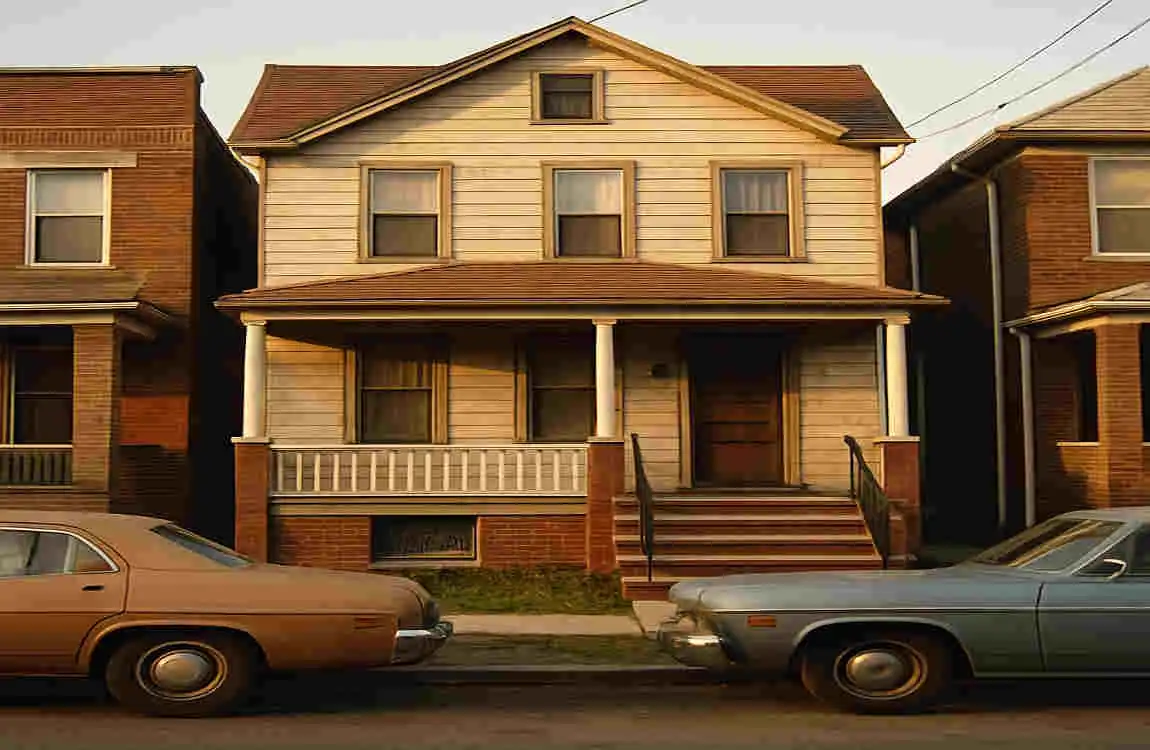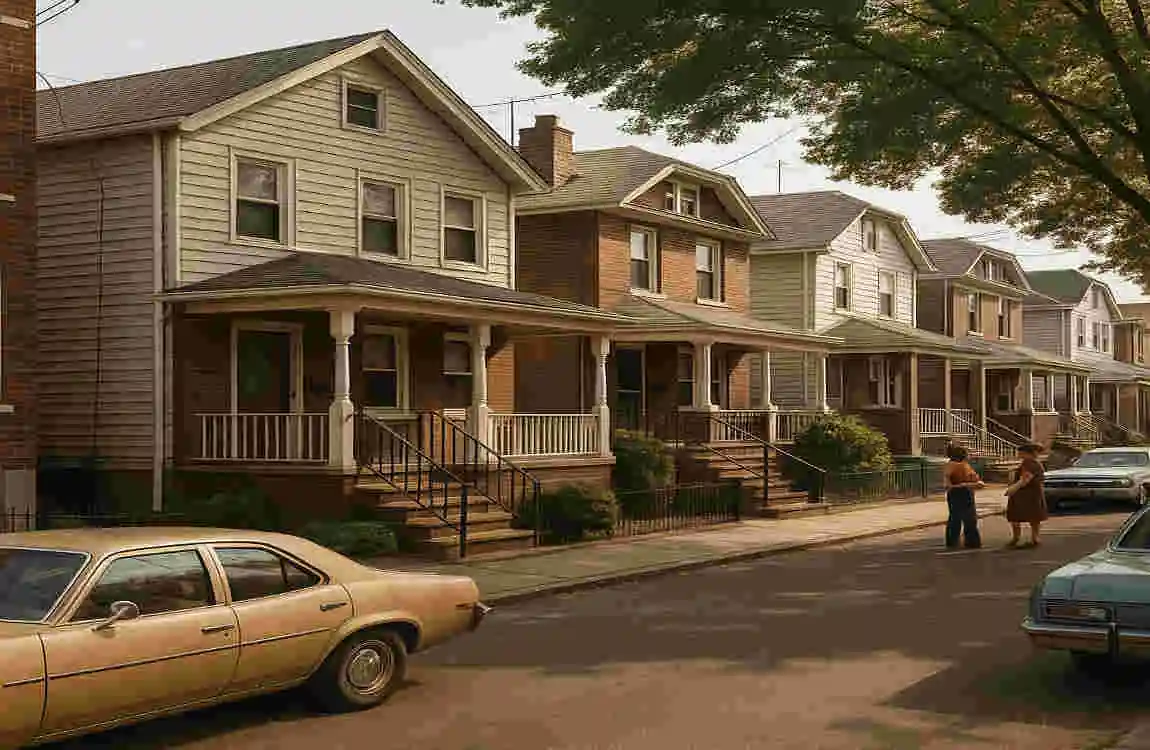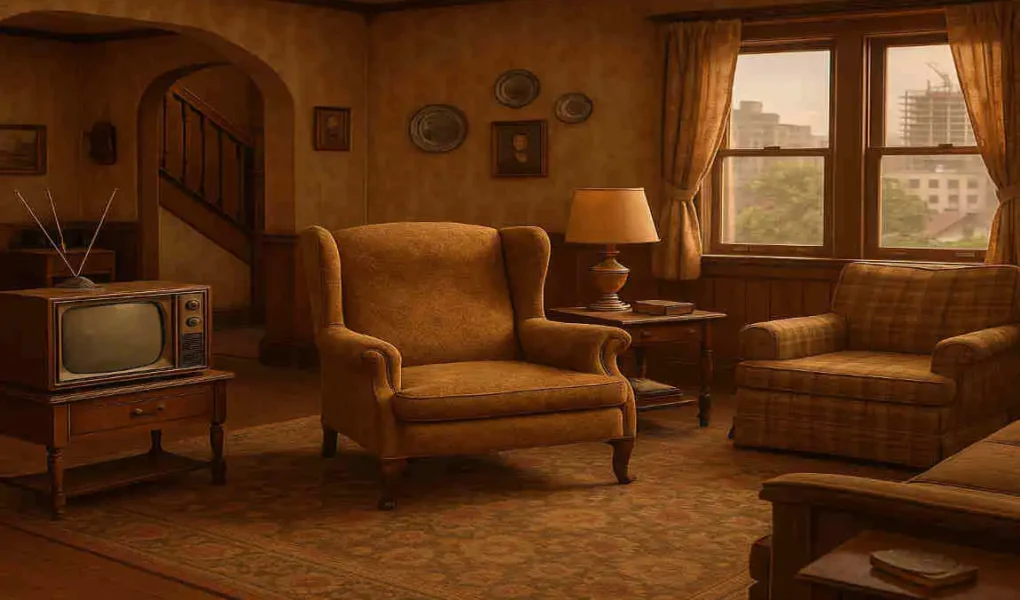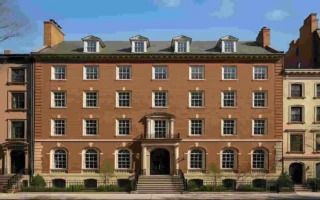When we think of classic American television, few shows are as culturally significant as All in the Family. Premiering in 1971, the sitcom broke barriers with its sharp humor, tackling social and political issues head-on while portraying the life of an average working-class family. At the heart of the show stood Archie Bunker’s house, a modest Queens home that became a symbol of American life and values of the time.
The house wasn’t just a backdrop. It was a character in itself, reflecting the personality of its owner, Archie Bunker—a man set in his ways, navigating a rapidly changing world. From its cozy yet old-fashioned interiors to its location in Queens, New York, the house epitomized the essence of the blue-collar working-class lifestyle of the 1970s.
The Origins of Archie Bunker’s House on All in the Family

Creation and Design of the Set
When All in the Family debuted, its creators wanted to present a realistic portrayal of middle-income America—warts and all. This realism extended to the show’s set design, where Archie Bunker’s house became a focal point.
You may also read (james brown house in augusta reopens to fans with exclusive historical tours).
The house was modeled after the quintessential Queens home of the 1970s: modest, functional, and reflective of working-class families. The layout featured a small living room, a cozy dining area, and a functional kitchen. The creators, led by Norman Lear, worked closely with set designers to ensure the space felt authentic and realistic.
The show’s art directors drew inspiration from actual homes in Queens, incorporating design elements like floral wallpaper, mismatched furniture, and a well-worn armchair. Archie’s iconic armchair, in particular, became a symbol of his stubborn and immovable personality.
Fun Fact: Archie’s armchair is so iconic that it now resides in the Smithsonian Museum as a piece of American cultural history.
The attention to detail didn’t stop at the interior. The exterior shots of the house were based on real homes in Queens, further grounding the show in reality.
The House as a Reflection of Archie Bunker’s Character
The design of Archie Bunker’s house wasn’t just about aesthetics; it was a deliberate reflection of his personality and values.
Archie Bunker, played by Carroll O’Connor, was a staunch traditionalist with conservative views, and the house mirrored these traits. Its interiors were unpretentious and functional, with no hint of modernity or luxury. The well-worn furniture, simple decor, and cluttered spaces symbolized a family rooted in tradition and routine.
Each room in the house played a role in the show’s storytelling. The living room, for instance, was where Archie would sit in his armchair and deliver his famous rants, often sparking debates with his family. The kitchen was another key setting, serving as the backdrop for family meals and candid conversations about life, love, and politics.
Through its design, Archie Bunker’s house became a microcosm of the broader cultural and societal issues that the show tackled.
You may also read (inside kenny chesneys stunning st john house a caribbean paradise).
The Real Queens Neighborhood Behind Archie Bunker’s House

Historical Context of Queens in the 1970s
To understand Archie Bunker’s house, we must first look at the Queens neighborhood it was set in. During the 1970s, Queens was a melting pot of cultures, predominantly working-class and middle-class families.
The borough was characterized by its modest homes, a mix of single-family houses, and small apartment buildings. The population was largely made up of European immigrants and their descendants, who brought their cultural traditions and values with them.
However, Queens in the 1970s also faced economic and social challenges. The area experienced shifts in demographics, rising tensions related to race and class, and financial uncertainty. These dynamics were skillfully woven into the storylines of All in the Family.
The Neighborhood Where Archie’s House Was Set
While the show didn’t specify an exact Queens neighborhood, it’s widely believed that Archie Bunker’s house was modeled after homes in areas like Astoria or Maspeth. Both communities were predominantly working-class, with a mix of Irish, Italian, and German-American families.
The fictional Bunker residence captured the essence of these neighborhoods: close-knit communities where everyone knew each other, homes that were practical rather than fancy, and a strong emphasis on family and tradition.
Did you know? The exterior shots of the house were filmed on location, further adding to its authenticity.
Impact of the Show on Public Perception of Queens
For many viewers, All in the Family was their introduction to Queens. The portrayal of Archie Bunker’s house and its surrounding neighborhood painted a vivid picture of life in the borough, highlighting its charm as well as its challenges.
However, the show also reinforced certain stereotypes about Queens and its residents. Archie’s conservative views and resistance to change were often seen as representative of the borough’s working-class population. While these character traits were exaggerated for comedic effect, they also sparked important conversations about race, class, and identity.
Archie Bunker’s House: A Pop Culture Icon
Memorable Scenes and Episodes Centered Around the House
Archie Bunker’s house was the setting for some of the most memorable moments in television history. From heated political debates to heartfelt family reconciliations, the home provided the perfect backdrop for the show’s mix of humor and drama.
One unforgettable episode, “Sammy’s Visit,” featured Sammy Davis Jr. visiting the Bunker household, leading to one of the most iconic comedic moments in TV history.
Symbolism of Archie’s House in Social Commentary
The house wasn’t just a physical space—it was a symbol of the cultural and societal shifts happening in America. The clash between Archie’s traditional values and the progressive ideals of his son-in-law, Michael, often played out within the walls of the house.
Legacy of the Set in TV History
The influence of Archie Bunker’s house can still be seen in modern sitcoms. Shows like Roseanne and The Middle have drawn inspiration from their realistic portrayals of working-class families and their homes.
The Transformation of Queens from the 1970s to Today
Queens has undergone significant changes since the 1970s. Gentrification, an influx of new immigrants, and urban development have transformed the borough, making it one of the most diverse places in the world.
| 1970s Queens | Modern-Day Queens |
|---|---|
| Predominantly European immigrants | Global diversity with over 130 languages spoken |
| Modest working-class homes | Trendy cafes, luxury apartments |
| Conservative social values | Progressive and inclusive culture |
Visiting Archie Bunker’s House in Popular Memory and Reality
While the original set was built on a soundstage, fans can still visit the neighborhoods that inspired Archie Bunker’s house. Walking through Queens, you’ll find echoes of the show’s charm and history.
Conclusion
Archie Bunker’s house represents more than just a physical space. It’s a cultural touchstone, a lens through which we can explore the social changes of the 1970s and the evolving story of Queens. Whether you’re a fan of All in the Family or fascinated by the history of New York, the house remains a symbol of tradition, transformation, and timeless storytelling.
You may also read (inside jamal crawfords private waterfront dream home in seattle a glimpse into nbas flashy humble stars sanctuary).




